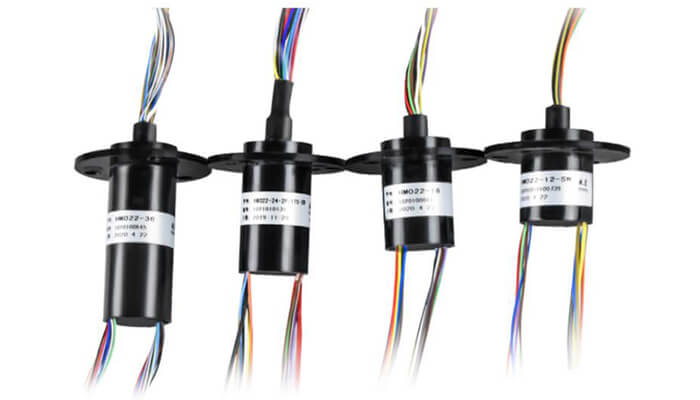When designing and implementing systems that involve rotating components, engineers and decision-makers often face the challenge of selecting the right electrical connectors to transmit power, data, and signals effectively. Two common options in this domain are slip rings and clock springs. Both serve the purpose of providing continuous electrical connections in systems with rotating elements, albeit with different structures, functionalities, and applications. As a result, making a well-informed choice between these two components is crucial for optimizing system performance and reliability.
The goal of this article is to present a comprehensive comparison between slip rings and clock springs across various aspects, helping users make informed decisions about which component would best suit their specific needs and applications. By thoroughly understanding the differences, strengths, and limitations of each component, as well as their use-case scenarios, users can select the ideal solution for their systems, ensuring optimal outcomes in terms of performance, durability, and efficiency.
An in-depth exploration of these components includes discussing their design and structural differences, associated performance, and reliability criteria, along with installation, integration, cost, and environmental factors. Contextualizing these components within detailed usage scenarios and industry-specific applications will further clarify the benefits and limitations of each, ultimately empowering readers to make informed decisions that cater to their unique requirements.
Slip Rings Overview
Slip rings, colloquially known as rotary electrical interfaces, are crucial components of many mechanical systems requiring rotational motion. They play a fundamental role in transferring electrical power or signals from a stationary component to a rotating component in a system.
The fundamental principle underlying the operation of slip rings revolves around the continuous electrical connection they establish. These devices consist of rotating (also referred to as sliding) contacts that maintain constant communication with stationary ones. The slip rings spin in relation to the rotation of the device, while the brushes, made from metal or graphite, remain stationary. As the slip ring turns, the brushes slide over it, allowing the electrical current or signal to pass through, enabling the device to function while in motion.
As versatile components, slip rings find applications in a wide array of industries and devices. In the aerospace industry, for instance, slip rings are an integral part of satellite communication systems, enabling the rotation of antennas while maintaining steady communication links. In the world of renewable energy, they’re found extensively within wind turbines, permitting the transfer of generated power from the rotating turbine blades to a stationary power grid. Their robustness and reliability have also earned them critical roles in robotics, where they facilitate power and signal transmission to parts that need rotational movement.
Understanding these typical applications of slip rings helps users gauge the importance and broad implications of these components in diverse technological contexts. Users can draw from these references to figure out whether slip rings would suffice for their specific needs, ensuring optimal performance and efficiency in their respective systems.
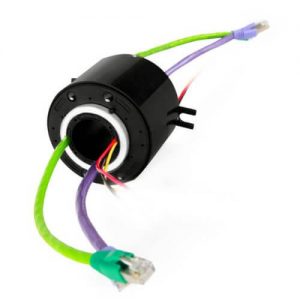
Clock Springs Overview
Clock springs, commonly known as spiral cable assemblies or flat-coiled cables, are innovative components designed for managing continuous electrical connections in systems with rotational movement. Named after the spring found in clockwork mechanisms, these devices can coil and uncoil to maintain their function as a system rotates.
The working principle of a clock spring lies in its unique helical shape, which allows it to coil and uncoil as rotational motion takes place. This coiling action provides a constant electrical connection between stationary and rotating components while facilitating a smooth, unrestricted motion. Clock springs usually consist of a ribbon-like cable made of highly flexible and conductive materials that can repeatedly bend without compromising performance.
Common applications of clock springs can be found in numerous industries, showcasing the versatility and functionality of these components. In the automotive industry, they are widely used in steering wheel assemblies, where they connect various electrical features such as airbags, sensors, and controls without hindering the free rotation of the wheel. Clock springs are also found in electrical devices such as cable reels, where they facilitate the smooth winding and unwinding of the cable while maintaining continuous electrical contact. In the electronics and robotics sectors, clock springs enable the efficient transfer of power and signal through rotational mechanisms, ensuring components function seamlessly while in motion.
By understanding the diverse applications and functional principles of clock springs, users can gain valuable insight into their suitability in various contexts. This knowledge will enable them to assess whether clock springs offer the optimal solution for their specific requirements, ensuring highly efficient and reliable performance.
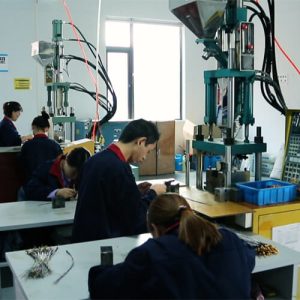
Slip Ring vs. Clock Spring: Design and Structural Differences
A crucial part of selecting between slip rings and clock springs involves understanding their inherent design and structural differences. While both components are central to maintaining electrical continuity in rotating systems, their mechanical structures drastically differ due to varying design principles and use-case scenarios.
Slip rings are typically circular in design and consist of one or more rings made of conductive materials such as copper or other alloys. These rings are fixed to a rotating shaft, and brushes that slide along the surface of the rings maintain the electrical contact. This assembly allows signals or power to be transferred from a stationary structure to the rotating shaft. Material selection in slip rings often leans towards those that can endure friction and wear, offering high conductivity and durability.
On the other hand, clock springs, feature a spiraling ribbon-like cable, coil, and uncoil based on the rotational motion in a system. The base of the clock spring is usually affixed to a stationary object, while the other end attaches to the rotating component. While the spiral design allows seamless rotational motion, it also mandates that material selection be flexible and resilient, capable of withstanding frequent winding and unwinding actions without compromising their electrical conductivity.
Beyond structural considerations, the discussion on design differences extends to the rotational range, the number of circuits, and the variety of signals each component can accommodate. A critical aspect to note here is how the slip ring’s continuous circular design enables unrestricted 360-degree rotation, while a clock spring’s design allows for rotation only up to a certain limit based on its coil’s length.
In terms of circuits and signals, both slip rings and clock springs can accommodate multiple circuits to transfer a wide array of signals. This includes data, power, video, and more, depending on the application requirements. Here, the differences lie in factors like the data transmission rate, capacity, and packaging — each tailored to the specific design of the component.
In scrutinizing these design and structural differences, users can gain a deeper understanding of how slip rings and clock springs work. With such insights, they can more confidently assess the compatibility of these components with their particular system needs, ensuring optimal performance and reliability.
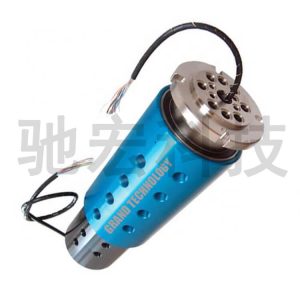
Slip Ring vs. Clock Spring: Performance and Reliability Differences
The differences between slip rings and clock springs extend beyond mechanical design, greatly impacting their performance, reliability, and long-term suitability in various applications. To ensure the optimal function of a system, understanding these distinctions is fundamental for users.
Starting with performance, the signal transmission quality of a slip ring or clock spring is a pivotal factor. While both components enable the transfer of electrical signals, each may handle variations in signal types differently, possibly resulting in disparity in data transmission rates. For instance, certain slip rings might be better suited to transmitting power but might struggle with high-speed data or sensitive signals. Conversely, some clock springs may excel at steady, low-power signal transmission.
Power ratings and operating speeds are also dependent on the specific designs and materials used. Given their robust construction, slip rings can manage higher power transmission and can tolerate high-speed rotations. Clock springs, although adept at handling varying rotation speeds, might have limitations when it comes to handling high-stress, high-power applications.
The service lifespan and maintenance requirements of both components are critical for assessing their long-term performance. Slip rings, subjected to increased wear due to their dynamic form of contact, might necessitate regular maintenance for brush and ring replacements. Conversely, clock springs, with their flexible and less-friction-based contact design, tend to have lower wear rates and reduced maintenance needs.
Delving into reliability and durability, both components have robust designs to withstand consistent use. However, factors such as the harshness of the operating environment, the quality of materials used, the precision of assembly, and the design of the component can influence their wear resistance and long-term performance.
By thoroughly understanding these performance and reliability differences, users can select the most suitable component for their systems, maximizing efficiency and optimizing longevity. These variations underline the importance of selecting a component that comprehensively aligns with the specific operational needs and constraints of the application in question.
Slip Ring vs. Clock Spring: Installation and Integration Differences
Installation and integration play a significant role in determining the suitability of slip rings and clock springs for specific applications. As different industries and systems demand varying degrees of customization, adaptability, and ease of installation, it’s vital to understand the differences between the constituents in these regards.
Ease of installation and integration differ between slip rings and clock springs due to their structural and mechanical distinctions. For slip rings, considerations such as mounting methods, the number of circuits, and required signal transmission types are critical. Slip rings are available in various configurations, including through-hole, pancake, and capsule types, ensuring there is a solution for most mounting situations. However, integrating slip rings into a system might require more specialized knowledge or tools, as these components often involve connecting brushes, housing, and rings.
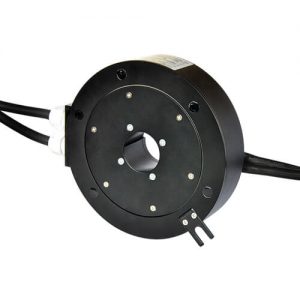
In contrast, clock springs have a straightforward installation process. Given their flat, spiral profile, they generally demand less space and are easier to integrate into a system without taking up much room. That said, the user still needs to ensure proper alignment and tension of the clock spring during installation to prevent possible complications or reductions in service life.
Compactness, weight, and adaptability are critical aspects when comparing slip rings and clock springs for various applications. In terms of compactness, clock springs are often more compact due to their flat spiral design, making them an excellent choice for space-constrained environments. Conversely, slip rings can be bulkier due to the need for brushes and housing, and their weight can vary depending on the size, number of circuits, and materials used.
Both components exhibit a degree of adaptability to various system configurations, but their suitability will depend on the specific needs and constraints of the application at hand. While slip rings can be tailor-made for multiple circuits and are customizable in terms of rotation speed and mounting configurations, clock springs boast a high degree of flexibility and adaptability in their design, catering to different coiling lengths, circuit numbers, and signal requirements.
By contextualizing installation and integration differences between slip rings and clock springs, users can choose the most appropriate component for their requirements. By optimizing the component’s compactness, weight, and adaptability to the system, users can maximize efficiency, compatibility, and overall performance.
Slip Ring vs. Clock Spring: Cost and Environmental Differences
In evaluating the difference between slip rings and clock springs, cost, and environmental resilience become decisive factors. These components, while inherently designed to fulfill similar roles, exhibit differing costs and traits when exposed to certain environmental factors.
The initial investment cost for slip rings and clock springs varies depending on factors such as size, the material used, and the complexity of the design. Generally speaking, both can range from affordable options designed for less demanding applications to premium-priced versions built to withstand harsh conditions and complex signal transmission requirements.
However, when considering cost over time, additional factors such as maintenance and replacement play a crucial role. Slip rings, given their friction-based operation, tend to wear out more quickly and require regular maintenance and eventual replacement of brushes and rings. This could potentially lead to higher long-term costs. On the contrary, clock springs require less maintenance due to their coiling design, leading to an extended service life and potentially lower lifetime costs.
On the environmental front, both components are engineered to resist a range of conditions, including fluctuating temperatures, high humidity, and heavy vibrations. However, the level of resistance depends greatly on the materials used and the quality of the construction.
Slip rings, depending on their design and materials, can withstand a wide range of temperatures and are usually resistant to high levels of vibration, making them suitable for industrial and heavy-duty applications. However, the presence of brushes and the open design in some models could pose challenges in very high humidity or dusty conditions.
In contrast, clock springs with their inherently sealed design offer better resilience to dust and moisture but may have limitations on extreme temperature resistance and vibration depending on the cable and casing materials used.
To sum up, a careful analysis of the long-term costs and environmental resilience of slip rings and clock springs can guide users to a more informed decision, ensuring they select the component best suited to their specific needs and application conditions.
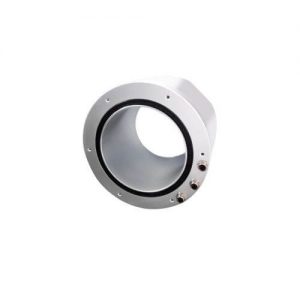
Slip Ring vs. Clock Spring: Usage Scenarios and Application-Specific Comparisons
Factoring in usage scenarios and application-specific requirements can provide valuable insights into whether slip rings or clock springs should be utilized.
Slip rings are typically favored in applications necessitating continuous 360-degree rotation. Examples include wind turbines, where slip rings enable the transfer of power and data from the stationary base to the perpetually rotating blades. In radar equipment and satellite equipment, slip rings cater to the constant rotation while maintaining reliable data and power transmission.
On the opposite side, clock springs are mechanisms of choice where limited rotation is required, combined with the need for compactness. An example is the steering wheel of a vehicle. The clock spring connects the stationary parts of the vehicle, such as the column or dashboard, with electrical features on the steering wheel like the airbag, horn, or audio system controls, adapting to the turning of the wheel.
Digging into industry-specific examples, aerospace applications, known for stringent weight, reliability, and space constraints, could favor either component depending on the specific requirement. A slip ring might be preferred for data and power transfers in rotational radar systems, while a clock spring could be used in pilot controls.
In the realm of renewable energy, especially wind turbines, slip rings find extensive use due to their ability to accommodate the constant, unrestricted rotation of the blades while ensuring efficient power and signal transmission.
Automotive systems, with requirements for both limited and continuous rotation, utilize both components. Slip rings could be found in electric motors of hybrid vehicles, while clock springs are a mainstay within steering wheel assemblies.
For medical equipment, compact imaging devices may favor the use of clock springs due to their compactness and lower maintenance needs, while larger diagnostic devices like CT scanners benefit from slip rings for unrestricted rotation and reliable power and signal transfers.
Understanding the strengths and limitations of slip rings and clock springs within context- and industry-specific scenarios allows for a more nuanced selection process. Both have unique sets of advantages that make them better suited to different types of applications, yet their effectiveness is always contingent upon the precise requirements of the system in which they are implemented.
Slip Ring vs. Clock Spring: Criteria for Selection
When deciding between these two electrical components, various factors must be deliberated. Thus, offering comprehensive guidance on choosing between slip rings and clock springs relies on a balanced consideration of multiple elements, including compatibility, system requirements, cost, maintenance needs, durability, and specific application requirements.
First, consider the nature and demands of your specific application, which will largely influence your selection. If dealing with a system requiring unrestricted, continuous rotation and complex circuits or power transmission, a slip ring may be the more suitable choice. Conversely, for devices necessitating a more compact size, lower maintenance, and more limited rotation, a clock spring would likely be more fitting.
Compatibility with the existing system plays a crucial role. The component needs to seamlessly integrate with the system, ensuring smooth signal or power transmission. Special attention should be given to the mounting type, size, and ability to handle the required number of circuits.
The cost, both initial and long-term should also be analyzed. While the initial costs of slip rings and clock springs might be comparable depending largely on the specifications, the life-cycle cost, including maintenance and replacement, could tip the scale in favor of one over the other.
Durability is reflected in the component’s ability to withstand the environment and lifecycle. If your application has to function in harsh or demanding conditions, choosing a component made of robust materials to resist conditions such as high temperatures or humidity is essential.
To illustrate, in wind turbines, the continuous rotation and toughness of the environment may tilt the balance in favor of slip rings, despite potential higher maintenance costs. In the medical industry, where maintenance could disrupt crucial services, the lower maintenance demands of clock springs in medical imaging devices could prove beneficial. In aerospace and automotive industries, the selection would greatly depend on the specific system—steering systems favoring clock springs, while radar systems or electric motors would benefit from slip rings.
By meticulously understanding these selection criteria and interrelating them with the system’s requirements and constraints, users can optimize their selection process, leading to improved system performance, reliability, and longevity.
Conclusion
Considering the specifics of one’s application before choosing between a slip ring and a clock spring is critical. Understanding the differences between these two components aids informed decision-making, leading to improved system performance and long-term reliability.
See What We Can Do

